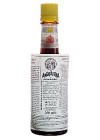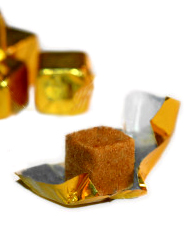Mustard: the classic condiment and the one item that is pretty much guaranteed to be found in the otherwise empty fridge at that new apartment you just moved in to. There certainly is a fairly broad variety of mustard mixes, but it essentially comes down to three kinds: yellow, Dijon and horseradish. For our purposes, I'll stay with the essentials: have a jar of yellow mustard and a jar of good French Dijon at hand. Dijon mustard is like Balsamic vinegar, as there is a pretty broad variety of heat, texture and flavors, so you'll have to try and taste, until you find the one(s) that you like. I personally am something of a mustard collector, with something like fifteen different jars of mustard, mostly Dijon, but several flavored types, like honey, balsamic, white wine and garlic. If you really want to burn your mouth off, then go for Grey Poupon, but me, I'll stick to rustic stone ground, if its all the same to you
Ketchup: again, the classic condiment in its bright red sauce and squeeze bottle container, it has its uses beyond just improving your fast food. it can be added on to your sauces to add both sweetness and tomato flavor. Get a good jar of the rustic chunky stuff and you will be thankful for it. Its a great way to add flavor to your burgers while adding a good kick of vegetables. In the hands of a creative cook, this can be turned into different sauces or flavor components. While there are commercially available varieties (some of them quite good), look at farmer's markets for the farm-made stuff, many of them are pretty incredible and you'll go through them pretty quickly, whether it in the summer with the results of your barbecue endeavors, or in winter to vary your roasts, braised meats or meat pies.
Soy sauce: the Chinese Worcestershire sauce, its the essential flavor and color add-on to so many Chinese dishes that anybody who wants to do some Asian food who doesn't have some at hand is kidding herself. While available in any grocery store, after trying out different products, I would highly encourage you to get the imported stuff. Its not that the VH or other home brews are bad, but... no. Go a little out of your way, get the good stuff like Kikkoman. While you're at the Asian shop, look at picking up tamari and mirin. Tamari is a soy sauce, but somewhat stronger flavored, while mirin in a cooking rice wine. Both of these are key components of Japanese cuisine.
Angostura bitters: the enhancer from Trinidad, made from a secret mixture of herbs, roots and possibly vaudou, its one of those who pack a big punch is a tiny amount. Most commonly used in cocktails, try using it in soups, sauces, or in any other situation where adding some amplifier would be a good idea. You really don't need to add a lot; a few drops are generally enough. Easily available in any grocery store that also carries wines, and is generally found right next to the maraschino syrup.
Harissa: the Tunisia hot sauce common to all of North Africa, it will bring both heat and flavor to those tagines and other middle-eastern dishes, prefect for hot summer nights or a taste of the exotic at any time of the year. It can be found in specialty shops, and of course, in ethnic grocery stores. In those shop, expect to find their home brew (and far superior mix), but you'll probably have to use it fairly fast. It is also conveniently found in resealable tubes, just like toothpaste. Don't mix them up, unless you feel like playing a nasty prank on your hungover roommate.
Pesto: going on a milder streak here, we're looking at an essential Italian staple for the magical quick-fix when a simple, yet flavorful sauce is needed. Essentially a fresh basil and olive oil mix, with the essential parmegiano and pine nuts. Unless you love arguments, don't ask Italians which one is the best, every nonna has her secret recipe blend that is, of course, the best. Tho its fun to see them argue about it. Pesto can be fragile, so once that the jar is opened, keep it in the fridge and make sure that there is always a layer of olive oil on top, it acts as a sealing cap and prevents mold.
Besides the ready to use concoction, there's a few others that don't quite fit in the other basics categories, but that you should have on hand because of their versatility and their usefulness.
Honey: honey is the old school sweetener, used since time immemorial to infuse a dish or drink with deliciousness that masks its otherwise bland nature. A spoonful of honey mixed in the cooking rice turns the dish into something far more appealing. It can also replace sugar in certain savory preparations where it's flavors would work in combination with the existing spices. And its great to have on hand to make tea more appealing and to treat a sore throat in winter.
Maple syrup: like honey it can be used as a sweetener (say for a Sunday morning coffee) or a flavor enhancer. Used sparingly, as I know that for most of you, its going to be hard to come by and/or expensive, but dont bother with so-called table syrup, its s terrible imitation.
Dried vegetables: a convenient mixture that comes in several varieties, useful for flavoring rice and to create quick soups from scratch. Treat it like flavoring herbs and use moderately if you want to stretch your supplies.
Vanilla: get the real stuff, not the artificial junk, even if its cheaper. A few drops are enough to either flavor directly, or enhance the flavor of many sweet dishes and baked goods. While you could got for the beans, they are rather on the pricey side, but if you feel that its the only way to go, then by all means, go for it, but use it smartly. The pods can be used to infuse a couple of times, so make sure that you keep them in an airtight container in the fridge after use.
Corn starch: not a flavor component, but a thickener. Its a quick way to thicken a sauce, to make a milk pudding and is pretty essential to Chinese cuisine. It is used in the marinade to help thicken the sauce, but also to make the flavors stick to the meats.
Toasted flour: basically, this is wheat flour that got toasted to a brown color. It is used to add color and flavor to sauces and gravy. Not essential, but useful to anybody who likes some delicious gravy or darker sauces
Bouillon cubes: they come in a variety of flavors and are a useful way to have stock at hand even if you have limited freezer space or cannot be bothered to make your own stock. Its a base, so you'll have to add some flavorings to that, but it takes little to turn a basic chicken or vegetable bouillon into a delicious soup. Think or your basic Ramen for example...
Once that you've got your flavors down, you turn the bland into the extraordinary, which is great relief to the down and out. With some practice, you'll start saving money, simply because when you'll eat your takeouts, it will be so below what you can make at home that you wont bother much and just whip out your own meals. And if you still have access to cheap and delicious eats, then congratulations, you are lucky buggers. Send us pictures and be happy.
For the rest of you, to your cutting boards and dish out!











very good - pesto - well the trick i would say as a confirmed dago is not to use too much olive oil....i like the dried veg. homemade ketchup, unfortunately, my chirrens always prefer stuff from the supermarket in those zones, same as mac and cheese
ReplyDeletenice blog